January Update
The past few days have graced me with the most excellent sleep I have experienced in many months. This is likely a non-determinate consequence of three circumstances: a month of sleep deprivation coming to an end; resuming my exercise routine; and owning two new, high-quality pillows. One of these things I most definitely do not recommend; try to guess which one. (Tip: not NORDSTÅLÖRT, which I do love and recommend).
In this update: a full month abroad, high intensity reading/studying, and serendipitous discoveries. It is quite long so feel free to skip whatever.
❦❦❦
The most momentous experience of the last month was a two week trip to São Paulo. There are two layers to this experience: the travel log, and what I learned. We will cover them separately.
From a tourist perspective, the story is straightforward. I flew in directly from NYC where I had just spent three weeks and, for the first time, the holiday period (more on that below).
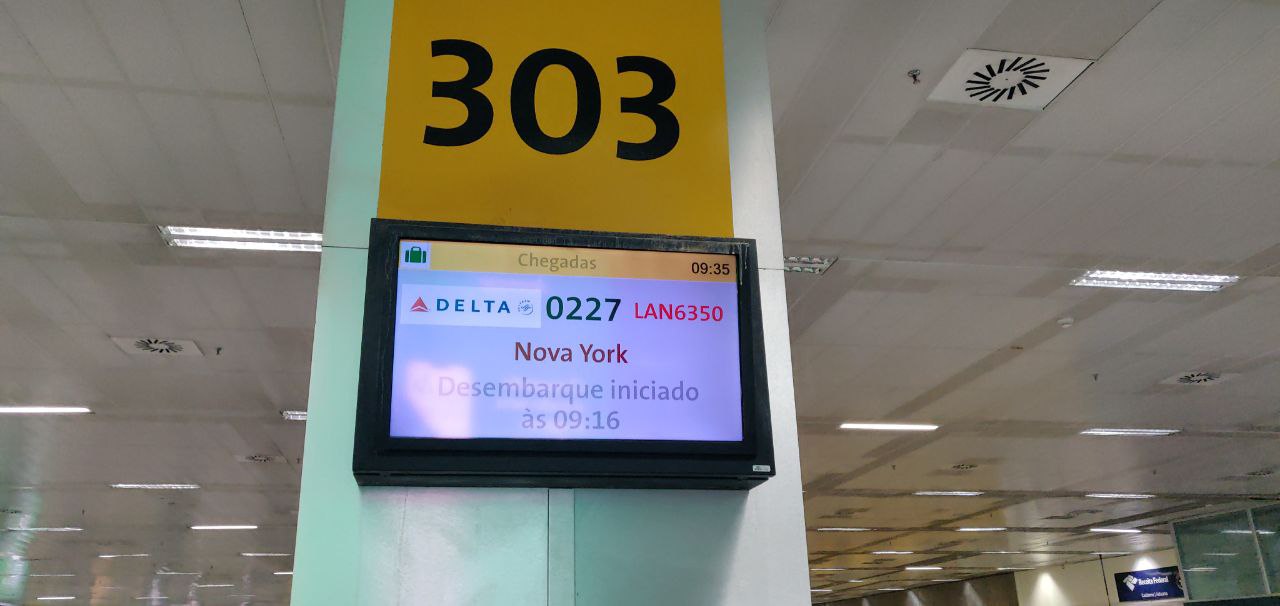
We had booked a small apartment in the Bela Vista neighborhood, a small walk away from the major Avenida Paulista. Its 40m2 and two bedrooms were adequate for three guests, and, as I learned then, representative of a middle class dwelling in this area. (I did not take pictures of our accommodation.)
This is the very first picture I took outdoors, on my way from the airport:

This landscape taken from the highway is representative of my overall impression of the city and its surroundings, throughout my stay: car traffic is at the forefront of city life but not jarringly so; one sees trees and other tropical lush beyond and among cars in every direction; and apartment buildings also stick out of the ground everywhere.
As I am wont to do, I experienced the city as an urban tourist: by walking around and watching people go about their day. In hindsight, two main observations remain: there is extreme wealth inequality, which is also very visible (nearly as much as in the USA; the main difference is that mentally ill people are not on the street in São Paulo); and most folk I could see looked highly active and/or busy. There is a feeling of hustle and bustle in the air, which was explained to me later: the government was so despondent in caring for people in the past that most folk, out of necessity, started organizing local businesses and services to hold society together and support each other.
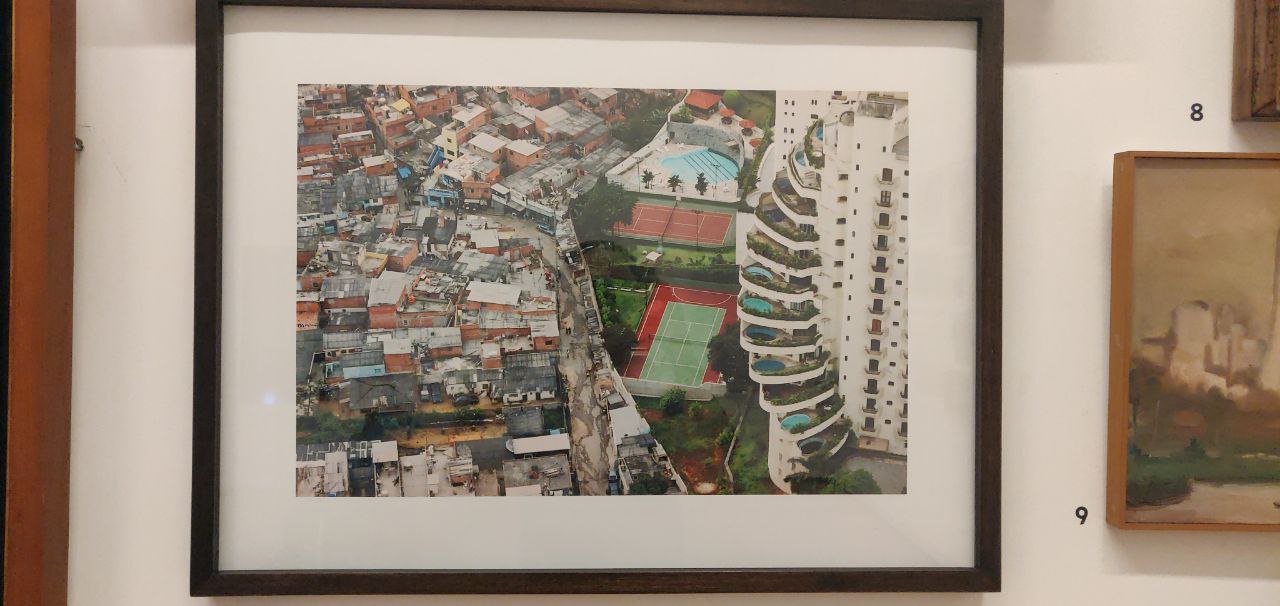
Cultural tidbits: despite the wealth inequality, I did notice three constants across socio-economic classes. One is the high percentage of abnormally muscled men (as I learned later, “there is a cultural expectation to care about one’s image”), another is the high level of cleanliness (ditto “caring about one’s image” but also “it is so warm, cultural norm is to take multiple showers a day”) and finally, the surprisingly high percentage of skin ink—in my estimate, at least one in five people across all demographics wears tattoos, and more for folk under 40.
The main obstacle to my full enjoyment of the experience was the temperature:
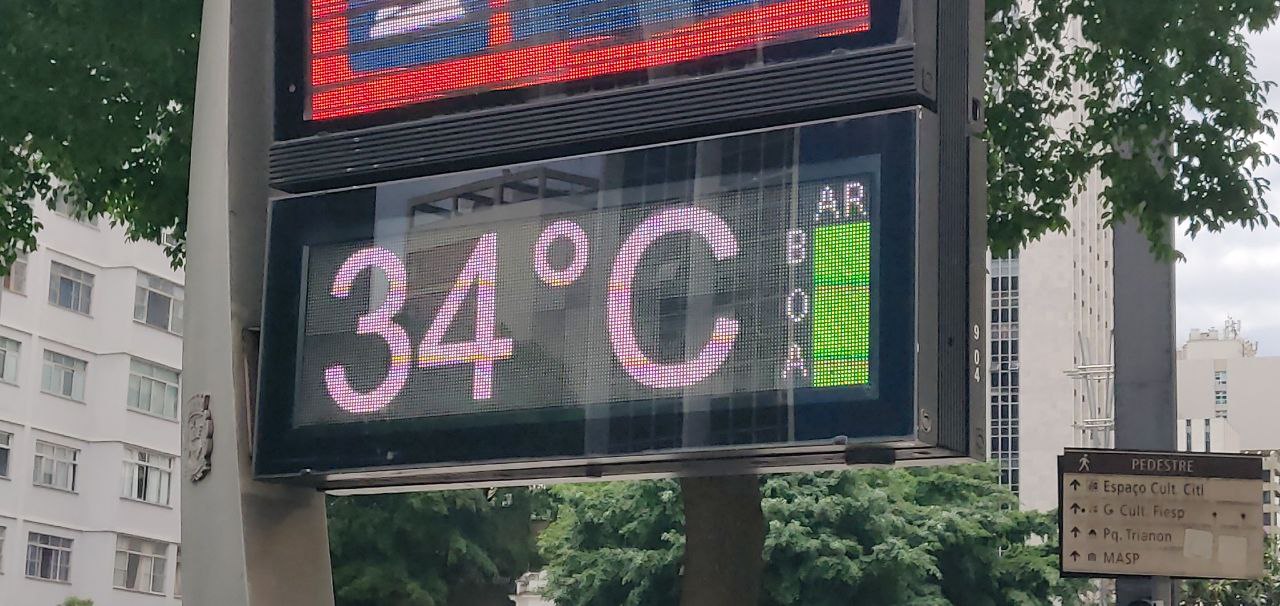
With 34°C during the day and at least 26°C at night, I was surviving far outside of my normal operating range. The first few days were rough. It helped that I had prepared mentally ahead of time; and I could see that the local folk had issues with this situation too. As I learned later, this weather pattern is new to them; normal summers used to be much more pleasant. This also explains why very few dwelling are equipped with air conditioning.
The part of the summer weather I really enjoyed was the storms, nearly every day, with their torrential rains. I have sympathy for the folk who suffer from the weekly flash floods in various areas of the city. Yet the soothing sound of the rain curtains and the warm petrichor rising from the ground worked the most towards relaxing my mind and body every evening.
❦❦❦
Another strong feature of my travel was the culinary experience. I had expressed interest in understanding the local cuisine, and I thus sampled many variations around the theme of rice, beans and meat. (I chose to set aside my preference for a vegetarian diet, which would have been extremely counter-cultural otherwise.) Brazilians also like imported culinary styles, and so we organized social meet-ups at Japanese restaurants, which were all most excellent.
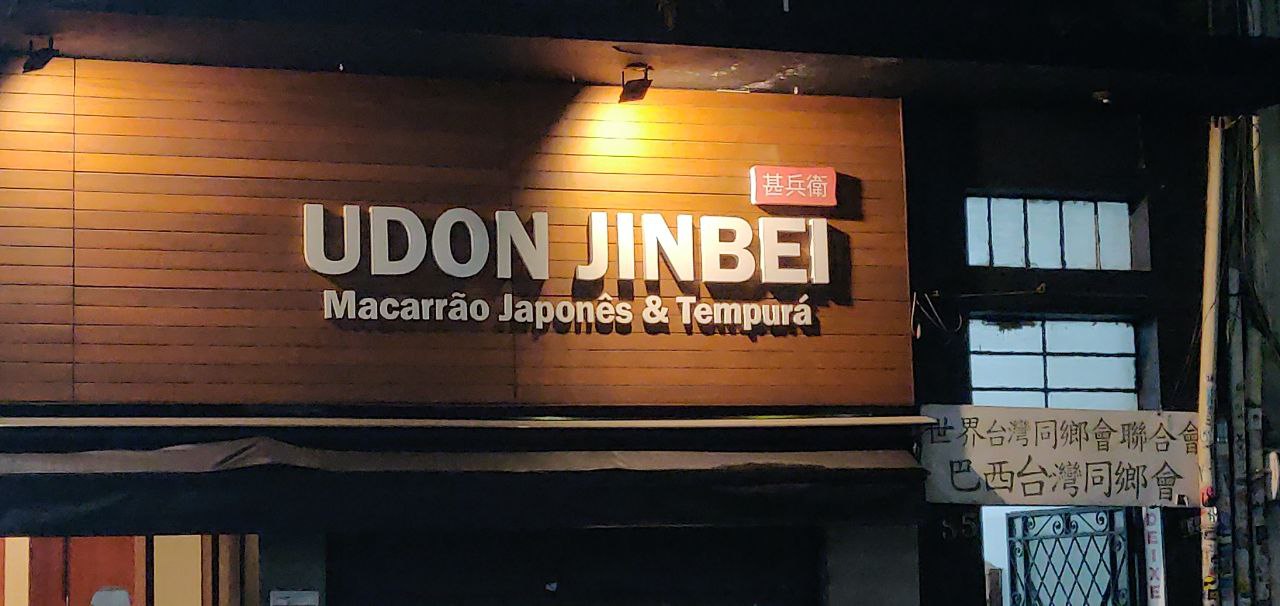
Linguistic tidbit: “macarrão”, the generic word for pasta/noodle, is cognate with “macaroni” and was imported from Italian. The Brazilian Portuguese vocabulary around food imports mainly from Italian, French and Japanese.
❦❦❦
It is hard to overstate the influence of Japanese culture in this region of Brazil, and harder yet to understand its status. The complex history of Japanese immigration in Brazil is not commonly documented. Even my deep dive into Bunkyo, the Japanese immigration museum, only helped me scratch its surface. If I understood well, in a nutshell the Japanese and Brazilian elites conspired in the 19th century to move the excess of poor Japanese away from Japan. They achieved this by creating a coffee plantation industry from scratch around São Paulo and luring the Japanese lower class with a dream of wealth abroad, which was really to become cheap laborers. The organizers on both sides made bank from the arrangement: on the Brazilian side, by reaping the fruits of a new category of exports and on the other side, by alleviating a serious economic drag on the Meiji restoration.
Until the mid-20th century, the Japanese immigrants were working under the belief they were only staying temporarily. To safeguard their ability to return to Japan, they worked hard to maintain their Japanese culture and education. The first investment of every immigrant group was to set up a school. Education was primarily given in Japanese and its main goal was to impart the Japanese way of life. By the turn of the World War Two, there were hundreds of thousands of second- and third-generation Brazilian Japanese folk who were legitimately fully entitled to call themselves Brazilian, were deeply embedded in the Brazilian economy, but were culturally, for all intent and purposes, very recognizably Japanese.
After World War Two, there was a cultural wave of moving “back” to Japan (dekasegi - 出稼ぎ). To me, it feels that only a minority chose this, and I understand that a number of them decided to return to Brazil afterwards anyway. In any case, the middle of the 20th century was when the Brazilian Japanese population started to mesh with the other ethnicities, both culturally and demographically: by that time, Japanese language schools had been outlawed, and other discriminatory government policies against the Japanese folk in turn stimulated artistic expression across all social classes. This ensured that the remainder of the Brazilian population were made aware of their Japanese embeds, and acceptance slowly grew from there. (The discriminatory policies were later lifted but some cultural scars can still be felt.)
If you are interested in this topic, Wikipedia has more to say.
❦❦❦
Segue: the primary purpose of my visit in Brazil was actually a social function. With my growing relationship with Brazilian folk at home, it felt natural to accompany them at least once during their yearly visit to the homeland, and show my face to their social circles.
On the surface, this was the mutually agreed plan. What happened during my stay can even be described in this way! However, at a deeper level we also found some duality in this shared experience, where some tension remains to be resolved.
On the one hand, I had chosen an “observer” mindset. I had traveled with the goal to watch, listen and learn. For every new extended friend I met there, I was curious to understand the shared background between the new person and my co-travelers. Attempting to stretch their conversation in my direction, especially by forcing folk to speak English, would have interfered with the authentic and effortless interaction I was seeking to witness between them. Instead, I let them chat away and catch up in Portuguese, making my best to understand what I could (probably less than 20% of words, but far more in body language) and remaining mostly silent to minimize the pressure they may have felt to include me somehow. This suited me well, at it always takes me a little while to “warm up” to new acquaintances anyways.
On the other hand, I am not sure I rose to meet my co-traveler’s expectations. I had sensed, beforehand, an understated excitement to introduce me to said social circles. In hindsight, I now believe this excitement was partially in anticipation of social joy derived from my active social participation, even at the cost of extra linguistic effort and translation latency. That is to say, perhaps the behavior that was expected of me was to act extrovertly, seek participation, introduce conversation topics across shared experiences and interests, and celebrate the building of a temporary cultural bridge. I did none of that. From the perspective of someone expecting what I did not do, my behavior could have been perceived as uninterested or disdainful of the local culture. Now I may have to defuse disappointment, annoyance, or both. I hope to clarify this in the next few weeks.
❦❦❦
There were three main take-aways from this first visit.
The first is that my enjoyment of travel is greatly magnified by the absence of advertisement in public spaces. It is hard to understand how visually and intellectually noisy a US city is rendered by visual ads until one experiences a city that is just as dynamic but without this noise.
Second, I found it remarkable how inconspicuously lush the local plant life is. Brazilian folk have long tuned out of it, but for me it is overwhelming! Plants grow everywhere, fast, and remain green all year. Even a small home yard can turn into a jungle without a heavy trim every three months. Abundant food literally falls off the trees (mangoes! everywhere, nearly all year round) and the most work apparently comes from weeding out unwanted vegetation to access the ever-growing produce. Everything is green, and at least a few things bloom every month. Orchids even grow naturally outdoors!
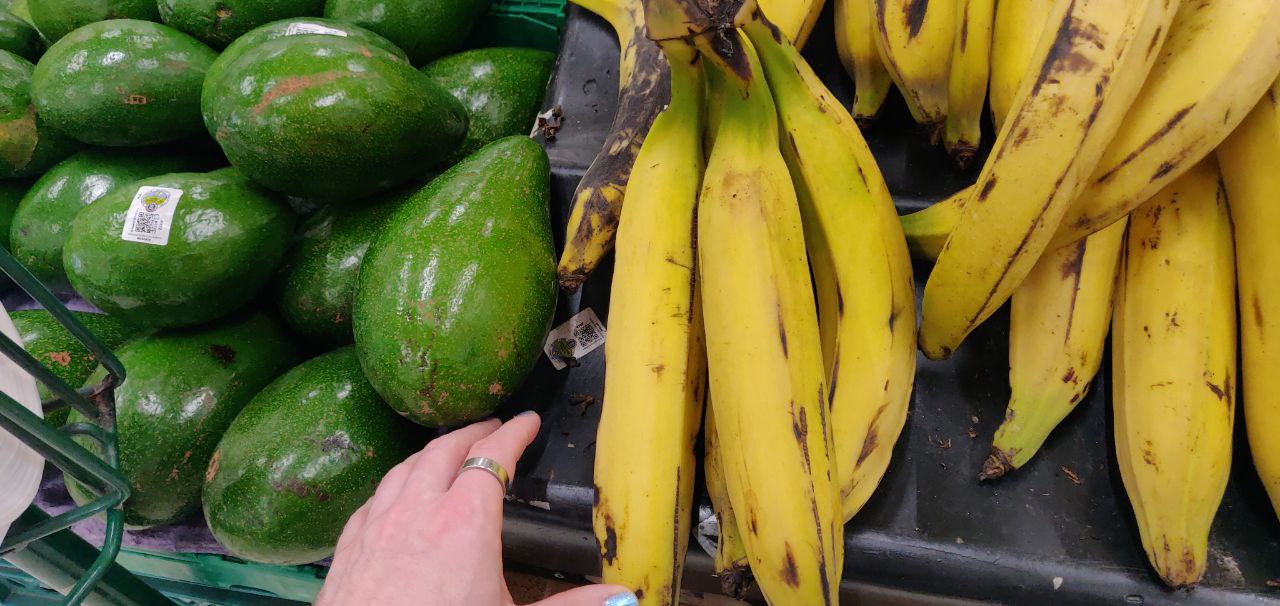

Third, the city is more uniformly spread out geographically. In some ways, it reminded me of Tokyo. There are high-density residential neighborhoods as far as the eye can see! (The following picture illustrates, taken from one of the panoramic angles from the Altino Arantes Building. All the other angles show the same.) It appeared to me as if one could live in one area and find all they need in life within a reasonable radius. How much of this is true? I will need to visit again to understand this more fully.
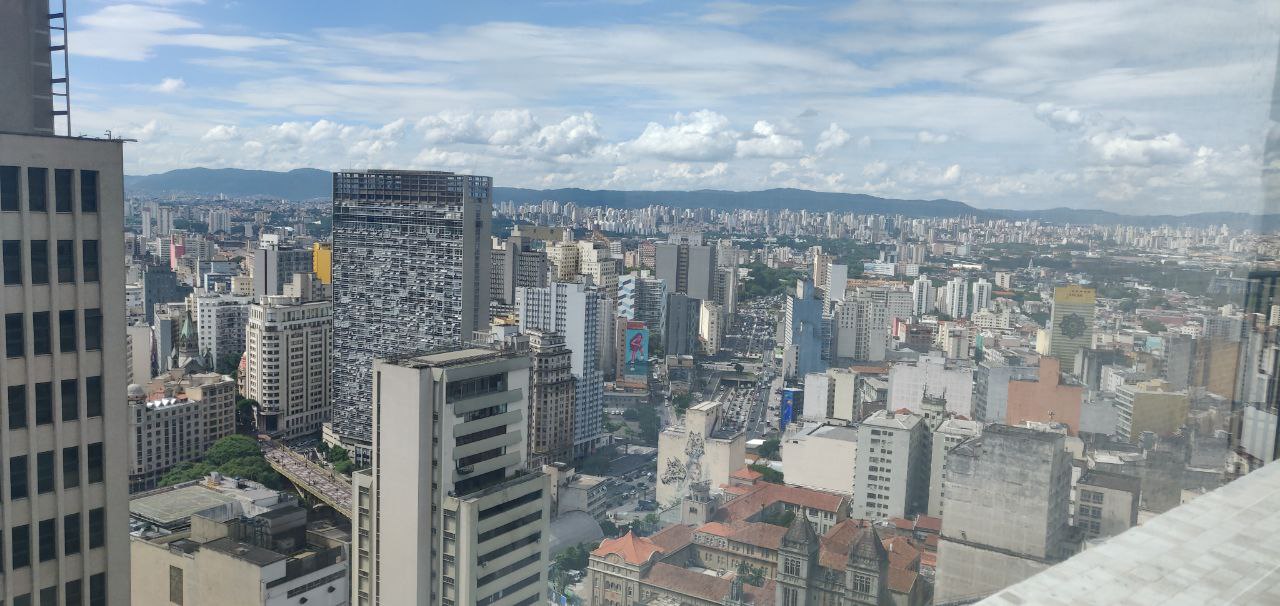
Next time, and before I trek to the inlands, I hope to also visit Rio and compare.
❦❦❦
Before São Paulo, I experienced the end-of-year holidays in New York City. Traveling there during that period, too, was a first.
The experience failed to feel “special” from the holiday alone, as I discovered most folk in NYC are just as busy with work and life around that time as the remainder of the year. Only a few privileged can afford to travel away (usually, towards family), and of those many still chose to work during their travel (remotely). As a result, I was able to spend quality time with many friends there, while my friends in the Netherlands were all traveling on their own or their time committed exclusively to their family.
The experience did feel “special” in other ways. I had the pleasure to spend quality time with close friends who are otherwise currently on sabbatical in South America. I helped another special someone to move from Texas into his newly leased apartment, and we experienced some of his first weeks as a NYC resident together. While this shared experience was somewhat stressful to us both, I felt I learned quite a few things about our relationship and the experience of someone discovering their new life in NYC.
The one thing that did not work was the quality of the mattress I used throughout my stay. Like the one I used later in São Paulo, it was too hard and I was not able to experience a full night of sleep for the entire month.
I thought I had learned that lesson already, and the reminder was painful: sleep quality should be a priority goal in any travel plans.
❦❦❦
The main other important thing that happened is a reboot of my reading habit. Thanks to a small technical investment, I found myself reading most days of the month.
Fiction-wise, I indulged only twice, for about just a week.
The first time was to re-read the first volume of The Brotherhood (self-published), followed by the new chapters being written for the second volume. This was just a guilty pleasure, with much basic enjoyment but few learnings.
My second time was my discovery of Anathem. Neal Stephenson is just so good of an author. Anathem’s metaphysics strongly align with my own, in a way reminiscent of Why Does Anything Exist (already linked here two months ago). Without spoiling anything, Anathem’s story happens on a planet close to our own, where mathematics have been elevated to the status of religion, and where quantum physics have a lot to do with human consciousness. This read was so pleasurable that the afterglow lasted for a full week afterwards! I plan to reconnect with Stephenson later this year.
The remainder of my reading was somewhat of a study program. Throughout the last six months, I had taught “The Algorithm” to provide me a reading list of titles that are currently hip in the influencer world. A lot of it is junk, but I was willing to sift through it and find its jewels, if any. Here is where I got so far:
- How to win friends and influence people - Dave Carnegie
- My second time reading this. During the first time, ten years ago, I did not fully understand it and it did not resonate. This time, I felt life had already moved me past its teachings. Plus, many principles in there do not gel well with the directness of Dutch culture. This text is due for a localization.
- The fifteen commitments of conscious leadership - Jim Dethmer et al.
- Although I did not particularly like its overly binary framing, my experience tells me that the underlying principles are sound. At least three chapters felt like they were teaching me something. I plan to skim this again after I read the other titles in my list.
- Your next five moves: Master the Art of Business Strategy - Patrick Bet-David
- This one is the real deal. This is a book that made me think clearly: “wow, this knowledge is extremely actionable and I wish I had read this earlier in my life.” I learned quite a few things on first read, and do plan to read it thoroughly a second time a bit later.
- High growth handbook: Scaling Startups from 10 to 10,000 people - Elad Gil
- Another page turner. I read about two thirds of it, then I paused. It was too much to absorb at once! It felt as if each chapter was touching my belief system, and I learned a few things about myself in the process. This will accompany me throughout the year and probably after that.
- How to master the art of selling - Tom Hopkins
- I opened this book with the ambition to learn how to work more effectively with salespeople. I was surprised to learn about some sales techniques that had been invisible to me previously. This feels useful. The more important discovery, however, was how much of the trade is dedicated to psychological self-help for the salespeople themselves, to give them strength in the face of frequent (and necessary) rejection. The running commentary about grit, confidence-building and discipline feels very applicable to many other fields. If anything, this book helped me find some respect for the role of sales and the hardships of salesfolk when interacting with the new generation of buyers.
Last month, I was reflecting on how I surprised myself wanting to go outside every day, in contrast to my previous lifestyle. This month, I surprised myself looking forward to my frequent commuting train rides, because they offer comfortable and focused reading time. I might even acquire a reading chair!
❦❦❦
Traveling also offered me numerous idle periods, i.e. fertile ground for serendipitous bits of interstitial learning.
For example, I learned that I had internalized too many restrictions about what are the “right” ways to learn something. Milan Cvitkovic taught me what a real “experimental” lifestyle could look like in Things you’re allowed to do, and Saul Munn taught me new ways to explore problems through methods for producing solutions.
In the AI/LLM area, I was delighted to discover Harrison Chase’s LangChain (github), the first time I felt some order in the chaos: composable abstractions with LLMs as building blocks. Meanwhile, I still believe that the “AGI” ambitions of OpenAI (et al.) are overblown and that LLM abilities will soon taper off, in the same way that Moore’s law was ultimately altered by limits in Dennard Scaling. Apparently, I am not the only one with these thoughts; Dwarkesh Patel offers a simple argument in the same direction in Will Scaling Work? — we will simply run out of fresh data to train models.
The Reddit community also has its insightful moments. I derived genuine feelings of happiness and learning pleasure from two threads in particular. Through What’s something that’s painfully obvious but people will never admit?, I learned of a few mistaken beliefs about how “different” I felt from fellow humans, and it left me feeling a bit more socially connected. In What’s something small you started doing that makes you drastically happier?, I took many notes of things I will want to try through the year; it left me feeling quite optimistic about my future well-being.
The discovery of holacracy led me to examine what makes US corporations choose more-or-less the same authoritarian model for decision-making, and why it is so different from other systems. This is not my first foray into the science of corporate governance, and I still stand by my belief that corporate structures are social games where participants often do not realize that they can influence the rules. Nevertheless, I learned about the various connections between esoteric topics such as sociocracy, European works councils, Agile software development, consensus decision-making, workers’ self-management, co-determination or even open-source governance.
Through all this chaos, I was wondering if there had been any attempts at standardizing these models, perhaps as a foundation to what most workers experience nowadays? It turns out that yes, such a thing exists. Robert’s Rules of Order is a recognized basis for most decision-making structures in the Anglo-Saxon world, in both public and private organizations. In the US corporate world, this is further amended by Donald Tortorice’s The Modern Rules of Order, published by the American Bar Association, and then further amended by state laws in Delaware, where most US firms are incorporated. These various rule books have been adapted in each European country, for example the Dutch government publishes a standard guide which I have seen used in both private and public settings already.
Perhaps humorously, the many hours I spent reading the above were prompted by a quip in this controversial writeup by Charity Majors: My boss says we don’t need any engineering managers. Is he right?
As Dan McKinley famously said, we should “choose boring technology“. Boring doesn’t mean bad, it means the capabilities and failure conditions are well understood. You only ever get a few innovation tokens, so you should spend those wisely on core differentiators that could make or break your business. The same goes for culture. Do you really want to spend one of your tokens on org structure? Why??
For better or for worse, the hierarchical org structure is well understood. There are plenty of people on the job market who are proficient at managing or working with managers, and you can hire them. You can get training, coaching, or read a lot of self-help books. There are various management philosophies you can coalesce around or use to rule people out. On the other hand, the manager-free experiments I’m aware of (e.g. holacracy at Medium and GitHub, or “Choose Your Own Work” at Linden Lab) have all been quietly abandoned or outgrown. Not, in my experience, because leaders went mad for power, but due to chaos, lack of focus, and poor execution.
I disagree with the conclusion, but the read was interesting.
❦❦❦
The busy schedule did not leave space for as much gaming as I had hoped to do. I am trying very hard to want to play Baldur’s Gate 3, and still failing. The turn-based play style remains a turnoff. On the other hand, I thoroughly enjoyed the visuals in Chants of Sennaar, just as much as its linguistic puzzles. I also find myself wanting to play TOEM: a photo adventure together with a friend, as a relationship-building exercise.
❦❦❦
The discovery was a bit random, but I found myself enjoying Joey Schweitzer’s Better Ideas on Youtube. I like his voice, I like his focus during his monologues, and most of his proposals are not even half-bad. I usually like to try and poke holes at the rationales used throughout the self-help genre and Joey’s videos resist my poking quite a bit. One video that challenged me in particular was The fastest way to transform your life and I still keep thinking about it.
On a related note, Liam Porritt also intrigues me and I found some unexpected inspiration from his 4 habits to find fulfilment.
❦❦❦
Just like gaming, but also due to the reduced living circumstances, my movie-watching was limited. I did find some time to soothe myself with Red, White and Royal Blue, very predictable but also very pretty and well-acted. I can certainly see why it was a hit.
On a more serious note, I learned a bunch about the private life of professional football players in Argentina through Martín Farina’s lens in Fulboy. Despite their dreams of money, their life is not easy and I definitely felt some dystopian vibes when learning about player trading between investors. I wonder how much of this translates to the European world.
❦❦❦
Global politics: John Burn-Murdoch (Financial Times) wrote A new global gender divide is emerging (cache). I found the argument convincing and it felt important.
“It would be easy to say this is all a phase that will pass, but the ideology gaps are only growing, and data shows that people’s formative political experiences are hard to shake off. All of this is exacerbated by the fact that the proliferation of smartphones and social media mean that young men and women now increasingly inhabit separate spaces and experience separate cultures.”
❦❦❦
Music: Ghost Data - The Wounded Healer. I am playing this on repeat. It is so good.
❦❦❦
Finally, I also searched, and failed to find, organizations that organize group travels with a focus on 1) snowboarding 2) meeting new friends.
As far as I can see, organizations that specialize in friend-making focus on more calm, less sporty activities; and organizations that specialize in snowboarding trips focus on supporting existing friend/family groups, not the formation of new relationships.
If such a thing existed, I would pay good money for it. In fact, some of my friends report the same. Is this a business opportunity?
❦❦❦
References:
- IKEA - NORDSTÅLÖRT (405.602.83): https://www.ikea.com/nl/en/p/nordstaloert-ergonomic-pillow-side-back-sleeper-40560283/
- Wikipedia - Japanese immigration in Brazil: https://en.wikipedia.org/wiki/Japanese_immigration_in_Brazil
- Kobo - Libra 2: https://us.kobobooks.com/products/kobo-libra-2
- Long-form reads:
- The Writer X - The Brotherhood: https://www.goodreads.com/book/show/17908602-the-brotherhood
- Neal Stephenson - Anathem: https://www.goodreads.com/book/show/2845024-anathem
- Dave Carnegie - How to win friends and influence people: https://www.goodreads.com/book/show/4865.How_to_Win_Friends_and_Influence_People
- Jim Dethmer et al. - The fifteen commitments of conscious leadership: https://www.goodreads.com/book/show/24490392-the-15-commitments-of-conscious-leadership
- Patrick Bet-David - Your next five moves: https://www.goodreads.com/book/show/50542735-your-next-five-moves
- Elad Gil - High growth handbook: https://www.goodreads.com/book/show/40536148-high-growth-handbook
- Tom Hopkins - How to master the art of selling: https://www.goodreads.com/book/show/225390.How_to_Master_the_Art_of_Selling
- Interstitial reads:
- Milan Cvitkovic - Things you’re allowed to do: https://milan.cvitkovic.net/writing/things_youre_allowed_to_do/
- Saul Munn - Methods for producing solutions: https://www.brasstacks.blog/solution-production/
- Harrison Chase - LangChain: https://en.wikipedia.org/wiki/LangChain
- Dwarkesh Patel - Will Scaling Work? https://www.dwarkeshpatel.com/p/will-scaling-work
- Reddit - What’s something that’s painfully obvious but people will never admit? https://old.reddit.com/r/AskReddit/comments/191z4cv/whats_something_thats_painfully_obvious_but/
- Reddit - What’s something small you started doing that makes you drastically happier? https://old.reddit.com/r/AskReddit/comments/1983a42/whats_something_small_you_started_doing_that/
- Wikipedia - Holacracy: https://en.wikipedia.org/wiki/Holacracy
- Henry Martyn Roberts, et al. - Robert’s Rules of Order: https://en.wikipedia.org/wiki/Robert%27s_Rules_of_Order
- Donald Tortorice - The Modern Rules of Order: https://books.google.com/books?id=BJ4NyB-9rP8C
- Charity Majors - My boss says we don’t need any engineering managers. Is he right? https://charity.wtf/2024/01/05/questionable-advice-my-boss-says-we-dont-need-any-engineering-managers-is-he-right/
- Gaming:
- Rundisc - Chants of Sennaar: https://en.wikipedia.org/wiki/Chants_of_Sennaar
- Something We Made - TOEM: A Photo Adventure https://en.wikipedia.org/wiki/Toem
- Videos:
- Joey Schweitzer - The fastest way to transform your life: https://www.youtube.com/watch?v=SvOKVujt6rI
- Liam Porritt - 4 habits to find fulfilment: https://www.youtube.com/watch?v=3pH4TFx3FNg
- Movies:
- Red, White and Royal Blue: https://www.imdb.com/title/tt10172266/
- Fulboy: https://www.imdb.com/title/tt3672616/
- John Burn-Murdoch (Financial Times) - A new global gender divide is emerging: https://www.ft.com/content/29fd9b5c-2f35-41bf-9d4c-994db4e12998